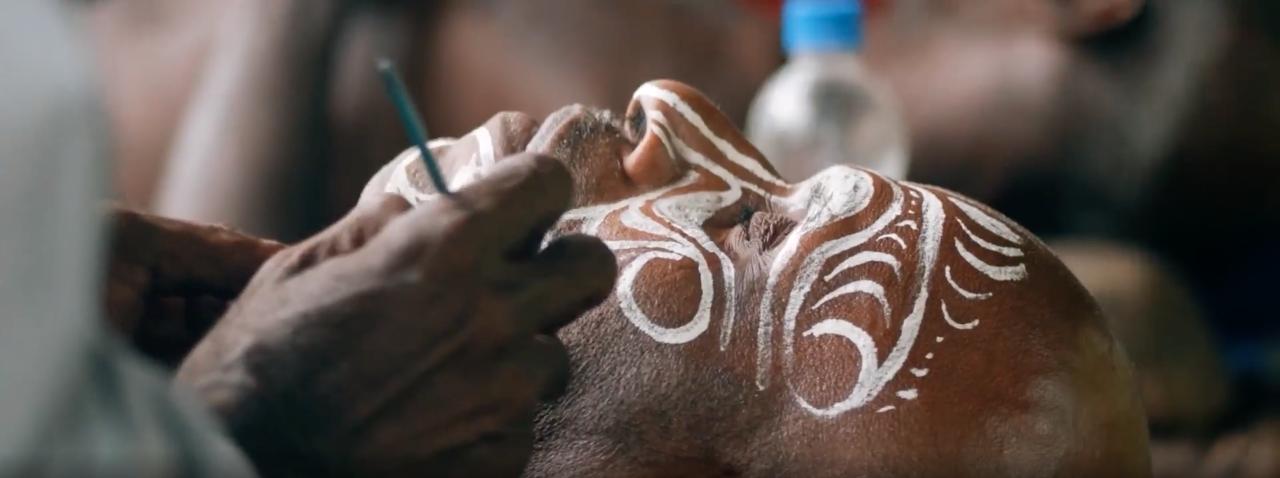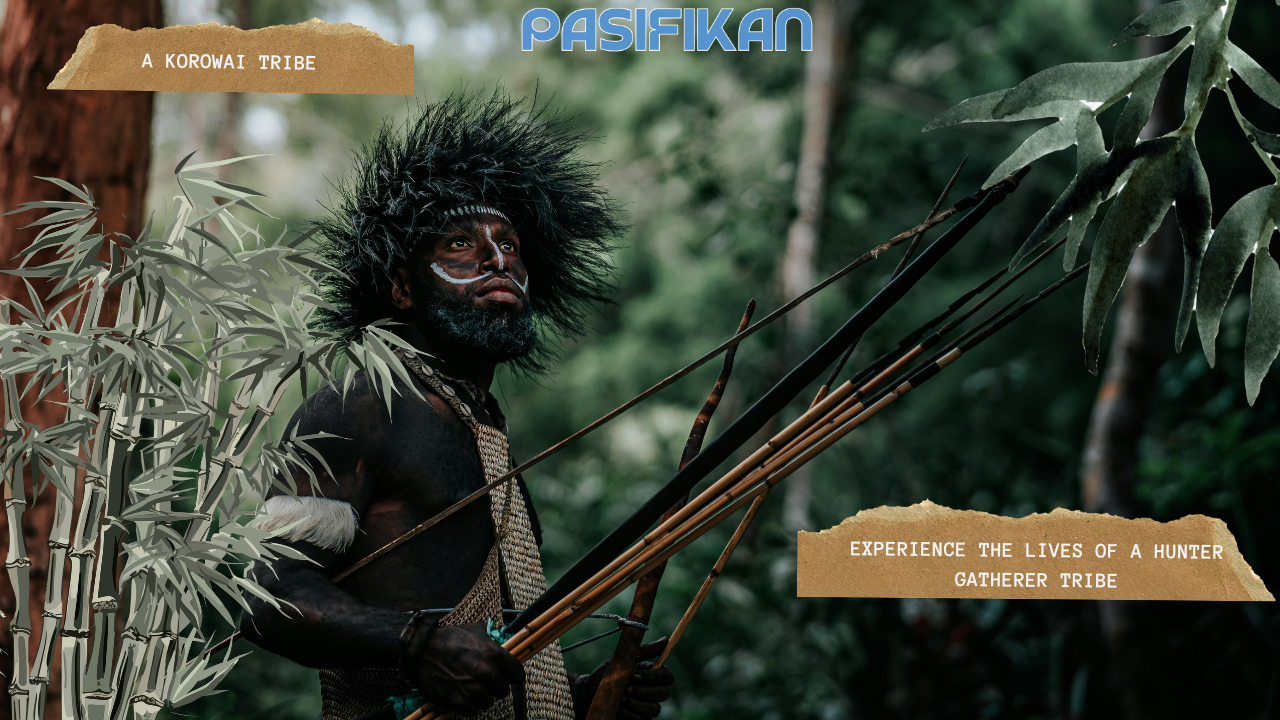WELCOME TO PAPUA NEW GUINEA
The Land of the Unexpected

ABOUT PAPUA NEW GUINEA
New Guinea is an island to the north of the Australian mainland, south of the equator. It is isolated by the Arafura Sea to the west, and the Torres Strait and the Coral Sea to the east. Sometimes considered to be the easternmost island of the Indonesian archipelago, it lies north of Australias Top End, the Gulf of Carpentaria and the Cape York Peninsula, and west of the Bismarck Archipelago and the Solomon Islands archipelago.
Politically, the western half of the island comprises two provinces of Indonesia: Papua and West Papua. The eastern half forms the mainland of the country of Papua New Guinea.
The shape of New Guinea is often compared to that of a bird-of-paradise (indigenous to the island), and this results in the usual names for the two extremes of the island: the Birds Head Peninsula in the northwest (Vogelkop in Dutch, Kepala Burung in Indonesian; also known as the Doberai Peninsula), and the Birds Tail Peninsula in the southeast (also known as the Papuan Peninsula).

LANDSCAPE
Papua New Guinea is largely mountainous, and much of it is covered with tropical rainforests. The New Guinea Highlands run the length of New Guinea, and the highest areas receive snowfall—a rarity in the tropics. Within Papua New Guinea Mount Wilhelm is the highest peak, at 4,509 m (14,793 ft).
With a magnificent mountainous landscape piercing the skyline, Papua New Guinea offers beautifully diverse and dramatic landscapes. It’s one of the world’s least discovered countries, allowing it to still maintain a rugged and raw beauty, protected from mass tourism and infrastructure.
So what are you waiting for, tidy up the suitcase and go on vacation to New Guinea Now.
CULTURE
The culture of Papua New Guinea is many-sided and complex. It is estimated that more than 7000 different cultural groups exist in Papua New Guinea, and most groups have their own language.
Because of this diversity, in which they take pride, many different styles of cultural expression have emerged each group has created its own expressive forms in art, dance, weaponry, costumes, singing, music, architecture, and much more. To unify the nation, the language Tok Pisin once called Neo-Melanesian (or Pidgin English) has evolved as the lingua franca — the medium through which diverse language groups are able to communicate with one another in Parliament, in the news media, and elsewhere.
People typically live in villages or dispersed hamlets that rely on the subsistence farming of yams and taro. The principal livestock in traditional Papua New Guinea is the oceanic pig (Sus papuensis).
HOUSE
Buildings in Papua New Guinea get little exposure on contemporary architecture platforms, but Studio Workshop’s Small House is attracting attention. While the house is a response to the site, climate, local labor, and materials, it is undoubtedly different from its neighbors. Small House not only stands out amongst the surrounding timber houses and uninspired apartment blocks, but it stands apart from the vernacular and traditional architecture that contributes to Papua New Guinea’s cultural and national identity.
Architecture in Papua New Guinea varies from region to region according to climate, landscape, and materials and with regard to culture and religion. Household shelters are traditionally made of wood, bamboo, palm leaves, among other materials, and are often built on stilts over land or water. In the East Sepik area, Haus Tambaram is an ancestral house of worship that functions as a meeting place for elders and a storehouse for sacred objects.
ANIMALS
The fauna of New Guinea comprises a large number of species of mammals, reptiles, birds, fish, invertebrates, and amphibians.
As the worlds largest and highest tropical island, New Guinea occupies less than 0.5% of the worlds land surface, yet supports a high percentage of global biodiversity. Approximately 4,624 vertebrate species inhabit the island of New Guinea and its surrounding waters, which constitutes about 8% of the recognized world vertebrates. This ranges from an estimated 4% of the worlds lizards and mammals to about 10% of the worlds fish species.
The numbers of global and New Guinea invertebrate species are poorly known, and thus an accurate comparison is difficult. Butterflies are the best-known invertebrate group and are represented in New Guinea by about 735 species, which is about 4.2% of the worlds total of 17,500 species.
ABOUT ISLAND
Papua Island, New Guinea or New Guinea (English: New Guinea, Tok Pisin: Niugini; Hiri Motu: Niu Gini; Indonesian: Papua, historically known as Irian) or formerly known as Irian Island, is the second-largest island (after Greenland) in the world located north of Australia. The island is divided into two regions, the western part of which is Indonesia and the eastern part is the state of Papua New Guinea. On the island, which looks like a bird of paradise, lies the highest mountain in Indonesia, namely Puncak Jaya (4,884 m).
The name Irian is used in Indonesian to refer to this island as well as to a province, such as "Irian Jaya Province". This name was proposed in 1945 by Marcus Kaisiepo, brother of the future Governor Frans Kaisiepo. This name is taken from the Biak language which means steamy, or the spirit to rise. This name is also used in other indigenous languages such as Serui, Merauke, and Waropen. This name was used until 2001 when the island and its province were again renamed Papua. The name Irian, which was originally favored by indigenous Papuans, is now considered the name was given to it by Jakarta.
"New Guinea" comes from the word New Guinea, the name given to it by Westerners, which is Indonesianized. They used to think that the land of Papua was similar to Guinea, a region in Africa and finally this island was called New Guinea.
The term "Papua" is used to refer to the island as a whole. The term "Papua" is now also used to refer to two provinces in western Papua which are included in the territory of the Indonesian state, namely Papua and West Papua. However, some publications (see for example Kartikasari et al. 2007) limit the use of the name "Papua" to the western part of the Island of New Guinea
Many of the beauty that Papua New Guinea has to offer
Advice from the Ocean: Be sure of yourself. Come out of your shell. Take time to coast. Avoid pier pressure. Sea lifes beauty. Don't get so tied down on work that you miss out on lifes beautiful waves.
%2Fguinea-3_zqwvri.jpg?alt=media&token=7554f5b7-b6c2-44fb-b0e5-973e2eeedbb2)
Culture
%2Fguinea-4_a9h46p.jpg?alt=media&token=ddc71570-fed7-48b6-90ce-99cb5c2ebc5f)
People
%2Fguinea-5_ardi71.jpg?alt=media&token=1a0c019c-2a97-417a-82b2-1fb97784b054)
House
%2Fguinea-6_gqsvux.jpg?alt=media&token=b3278d38-0760-4cd9-96b3-e2a162e1ae2b)
Animals
%2Fisland_v7vhnn.jpg?alt=media&token=7ea5d12a-410a-410f-a337-a228b440ff57)
Beach
%2Fguinea-8_bgsfeb.jpg?alt=media&token=47569293-575d-4e33-95bb-39f41a713167)
Beauty of the sea
Loading...
